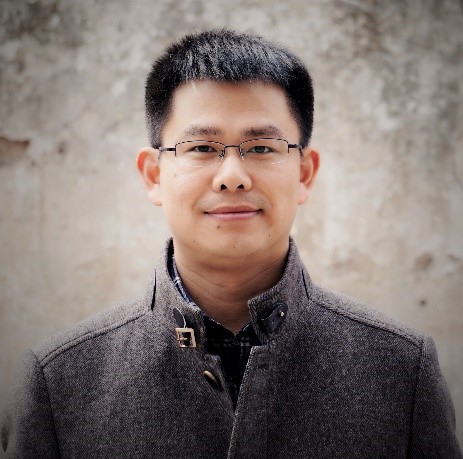
Chunlei Cang, Ph.D.
EDUCATION AND RESEARCH EXPERIENCE
1999-2003, Fudan University, B.S.
2003-2009, Fudan University, Ph.D.
2009-2014, University of Pennsylvania, Postdoc
2014-2015, University of Pennsylvania, Research Associate
2015-present, Professor, School of Life Sciences, University of Science and Technology of China
RESEARCH INTERESTS
Ion channels are proteins that mediate transmembrane ion flow. They play central roles in many important physiological activities such as resting membrane potential formation, action potential firing, neural signal conduction and muscle contraction. In addition to the ion channels expressed on the plasma membrane, there are also a variety of ion channels on the organelle membrane, which are involved in organelle ion transport, pH regulation and organelle interaction. Plasma membrane-expressed ion channels have been extensively studied, but the organellar ion channels are much less understood. Our research focuses on these organellar ion channels, especially the ones on lysosomal membranes, to study their properties, regulatory mechanisms, physiological functions and their role in lysosomal related diseases. Detailed research interests include:
1.Identification and functional study of lysosomal ion channels
Lysosomes are major organelles for the degradation of biological macromolecules, and are also important sites of intracellular signal transduction. They are involved in many cellular functions such as autophagy, nutrient sensing, endocytosis, calcium homeostasis and gene regulation. In recent years, a variety of ion channels have been found on lysosomal membranes, such as TPC1, TPC2, TRPML1, TMEM175, BK, etc. These ion channels play important roles in the physiological activity and functions of lysosomes. In addition, evidence indicated that there are other types of lysosomal ion channels which have not yet been identified. Therefore, we employ lysosomal patch clamp technique to screen and identify new ion channels on the lysosomal membrane, and analyze their channel properties and functions.

2. Lysosome and neurodegenerative diseases
Lysosome dysfunction can lead to a variety of diseases, such as lysosomal storage diseases, tumors, neurodegenerative diseases and the like. Many lysosomal storage disease are often associated with symptoms of neurodegeneration. In addition, the interactions between lysosomes and other organelles are also closely related to the occurrence of neurodegenerative diseases. Lysosomal membrane proteins such as ion channels and transporters are critical for lysosomal function, so they are likely to be involved in lysosome-related neurodegenerative diseases. Therefore, we study the dynamics of lysosomes during the development and progression of neurodegenerative diseases, as well as the expression and functional changes of lysosomal membrane proteins, and explore their roles in neurodegenerative diseases.
3.Organelle homeostasis and aging
Imbalance of organelle homeostasis is a crucial intracellular characteristic of aging. Mitochondrial damage, lysosomal storage and endoplasmic reticulum stress have been found in many types of aging cells, but the regulatory mechanisms of these organelle dysfunction and their roles in aging have not been well documented. We use cellular and animal models to identify key molecules and signaling pathways that regulate organelle homeostasis and explore their roles in aging. Our goal is to discover new organelle targets and develop new strategies to intervene aging and age-related diseases.
REPRESENTATIVE PUBLICATIONS
1. Chen CC, Cang C, Fenske S, Butz E, Chao YK, Biel M, Ren D, Wahl-Schott C, Grimm C, Patch-clamp technique to characterize ion channels in enlarged individual endolysosomes. Nat Protoc. 2017 Aug;12(8):1639-1658.
2. Lee C, Guo J, Zeng W, Kim S, She J, Cang C, Ren D, Jiang Y, The lysosomal potassium channel TMEM175 adopts a novel tetrameric architecture. Nature. 2017 Jul 27;547(7664):472-4753. Guo J., Zeng W., Chen Q., Lee C., Chen L., Yang Y., Cang C., Ren D. and Jiang Y., Structure of the voltage-gated two-pore channel TPC1 from Arabidopsis thaliana. Nature, 2016. 531(7593): p. 196-201.
4. Cang C., Aranda K., Seo Y. J., Gasnier B. and Ren D., TMEM175 Is an Organelle K(+) Channel Regulating Lysosomal Function. Cell, 2015. 162(5): p. 1101-12.
5. Cang C., Aranda K. and Ren D., A non-inactivating high-voltage-activated two-pore Na(+) channel that supports ultra-long action potentials and membrane bistability. Nat Commun, 2014. 5: p. 5015.
6. Cang C., Bekele B. and Ren D., The voltage-gated sodium channel TPC1 confers endolysosomal excitability. Nat Chem Biol, 2014. 10(6): p. 463-9.
7. Cang C., Zhou Y., Navarro B., Seo Y. J., Aranda K., Shi L., Battaglia-Hsu S., Nissim I., Clapham D. E. and Ren D., mTOR regulates lysosomal ATP-sensitive two-pore Na(+) channels to adapt to metabolic state. Cell, 2013. 152(4): p. 778-90.
8. Cang C., Zhang H., Zhang Y. Q. and Zhao Z. Q., PKCepsilon-dependent potentiation of TTX-resistant Nav1.8 current by neurokinin-1 receptor activation in rat dorsal root ganglion neurons. Mol Pain, 2009. 5: p. 33.
9. Zhang H., Cang C., Kawasaki Y., Liang L. L., Zhang Y. Q., Ji R. R. and Zhao Z. Q., Neurokinin-1 receptor enhances TRPV1 activity in primary sensory neurons via PKCepsilon: a novel pathway for heat hyperalgesia. J Neurosci, 2007. 27(44): p. 12067-77.
Website:http://en.biox.ustc.edu.cn/Faculty/qnqr/201512/t20151223_233184.html
E-mail: ccang@ustc.edu.cn
Tel: (+86) 18655123362